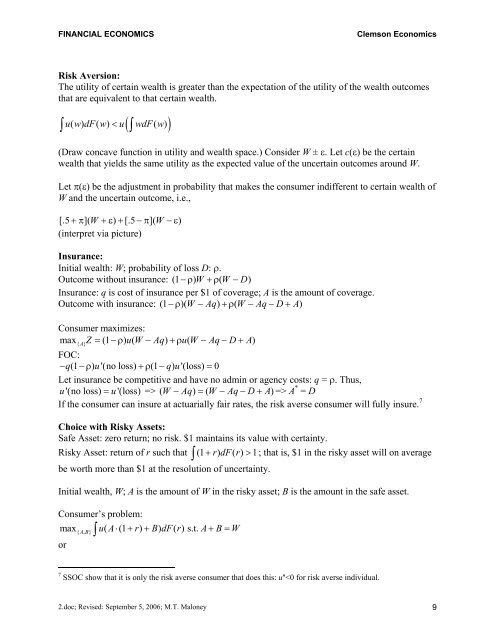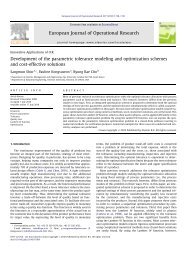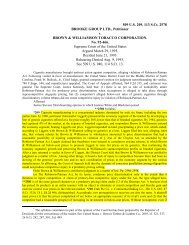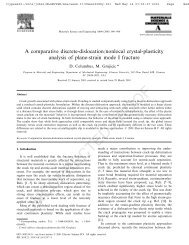Fisher Separation Theorem & Consumer Optimization 1. TWO ...
Fisher Separation Theorem & Consumer Optimization 1. TWO ...
Fisher Separation Theorem & Consumer Optimization 1. TWO ...
You also want an ePaper? Increase the reach of your titles
YUMPU automatically turns print PDFs into web optimized ePapers that Google loves.
FINANCIAL ECONOMICS Clemson Economics<br />
Risk Aversion:<br />
The utility of certain wealth is greater than the expectation of the utility of the wealth outcomes<br />
that are equivalent to that certain wealth.<br />
∫ ∫<br />
( )<br />
uwdFw ( ) ( ) < u wdFw ( )<br />
(Draw concave function in utility and wealth space.) Consider W ± ε. Let c(ε) be the certain<br />
wealth that yields the same utility as the expected value of the uncertain outcomes around W.<br />
Let π(ε) be the adjustment in probability that makes the consumer indifferent to certain wealth of<br />
W and the uncertain outcome, i.e.,<br />
[.5 +π ]( W +ε ) + [.5 −π]( W −ε )<br />
(interpret via picture)<br />
Insurance:<br />
Initial wealth: W; probability of loss D: ρ.<br />
Outcome without insurance: ( 1 −ρ ) W +ρ( W −D)<br />
Insurance: q is cost of insurance per $1 of coverage; A is the amount of coverage.<br />
Outcome with insurance: (1 −ρ)( W − Aq) +ρ( W − Aq− D+ A)<br />
<strong>Consumer</strong> maximizes:<br />
max Z = (1 −ρ) uW ( − Aq) +ρuW ( − Aq− D+ A)<br />
{ A} FOC:<br />
−q(1 −ρ ) u'(no loss) +ρ(1 − q) u'(loss)<br />
= 0<br />
Let insurance be competitive and have no admin or agency costs: q = ρ. Thus,<br />
u'(no loss) = u'(loss)<br />
=> => A * ( W − Aq) = ( W − Aq− D+ A)<br />
= D<br />
If the consumer can insure at actuarially fair rates, the risk averse consumer will fully insure. 7<br />
Choice with Risky Assets:<br />
Safe Asset: zero return; no risk. $1 maintains its value with certainty.<br />
∫<br />
Risky Asset: return of r such that (1 + rdFr ) ( ) > 1;<br />
that is, $1 in the risky asset will on average<br />
be worth more than $1 at the resolution of uncertainty.<br />
Initial wealth, W; A is the amount of W in the risky asset; B is the amount in the safe asset.<br />
<strong>Consumer</strong>’s problem:<br />
∫<br />
max { AB , } uA ( ⋅ (1 + r) + BdFr ) ( ) s.t. A+ B= W<br />
or<br />
7 SSOC show that it is only the risk averse consumer that does this: u''
















